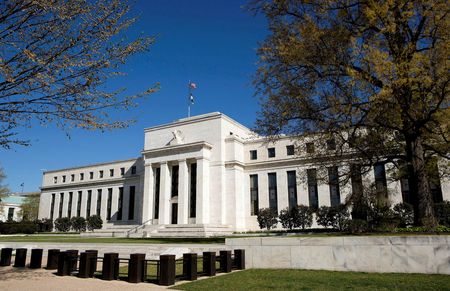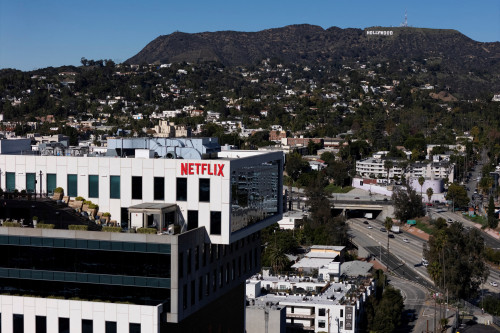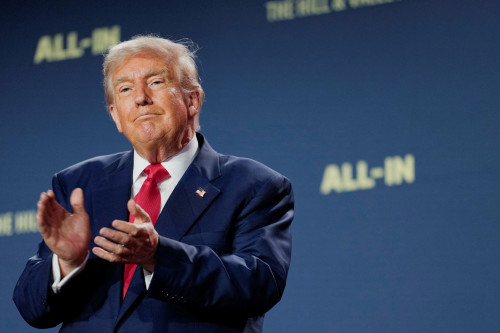By Ann Saphir
(Reuters) -Prospects for a first Federal Reserve interest-rate cut before the end of summer — or even at all this year — took a body blow on Wednesday with another U.S. inflation report that cast into stark relief the stickiness of price pressures across the U.S. economy.
After months of centering on June for the start of Fed policy easing, traders’ bets are now squarely on the Fed’s mid-September meeting for an initial rate reduction, after a third straight stronger-than-expected reading on consumer inflation sent financial markets into a fast retreat.
And the chance that the Fed won’t cut rates at all this year leapt from a barely measurable sub-1% a week ago to about 14% after Wednesday’s inflation surprise. While that remains an outside view for now, it is increasingly discussed as a possibility among economists and some Fed officials themselves.
Minutes from the Fed’s March meeting, released on Wednesday, show policymakers were already disappointed by recent inflation readings before the latest report.
At that time, the typical Fed policymaker still felt that three rate cuts this year would be appropriate, but momentum for less was already gaining steam. Atlanta Fed President Raphael Bostic for instance said he sees a single rate cut this year in the fourth quarter.
“Given that the U.S. economy has been so robust and so strong and so resilient, I can’t take off the possibility that rate cuts may even have to move further out,” Bostic said in an interview with Yahoo Finance on Tuesday.
Wednesday’s report from the U.S. Department of Labor showed the consumer price index rose 3.5% year-on-year in March, an acceleration from the 3.2% rise in February. Core consumer price inflation, which strips out food and gas prices and is one measure economists use to gauge the stickiness of prices, rose 3.8% year on year, the same pace as in February.
“This print isn’t going to generate the additional confidence that officials were looking for,” said Inflation Insights’ Omair Sharif. “If they were disappointed in the January and February inflation prints, they’ll be outright despondent after today’s reading.”
U.S. President Joe Biden, who faces former president Donald Trump in a presidential election in November, acknowledged Wednesday that still-strong inflation likely means a delay to the Fed’s rate cut plans, though he said he stands by his prediction that borrowing costs will drop this year.
The yield on the benchmark 10-year Treasury note hit the psychologically important level of 4.5% after Wednesday’s inflation report, its highest since November last year. Two and 10-year yields posted their biggest daily gains since March 2023 and September 2022, respectively.
Fed officials including the influential Fed Governor Christopher Waller have said they needed more data to assess if stronger-than-expected inflation readings in January and February were only bumps in the road toward the Fed’s 2% inflation goal.
Traders are now betting the Fed will deliver a first quarter-point interest rate cut at its September 17-18 meeting, bringing the policy rate target to a 5%-5.25% range, and they see just one more rate cut by the end of the year.
Three months ago, as inflation appeared to be receding much faster than expected, the Fed was seen cutting rates a total of five times this year.
“The lack of moderation in inflation will undermine Fed officials’ confidence that inflation is on a sustainable course back to 2% and likely delays rate cuts to September at the earliest and could push off rate reductions to next year,” wrote Nationwide Chief Economist Kathy Bostjancic after the CPI report.
(Reporting by Ann Saphir; Additional reporting by Stephen Culp and David Barbuscia; Editing by Andrew Heavens, Andrea Ricci and Chizu Nomiyama)





